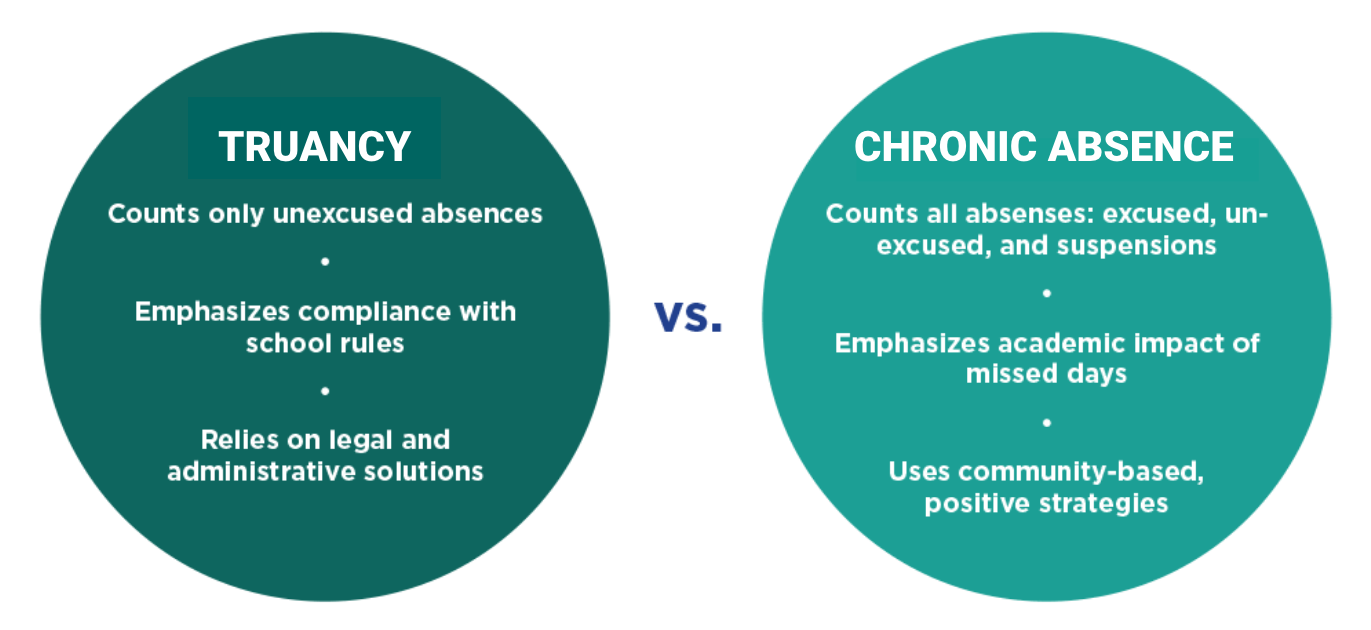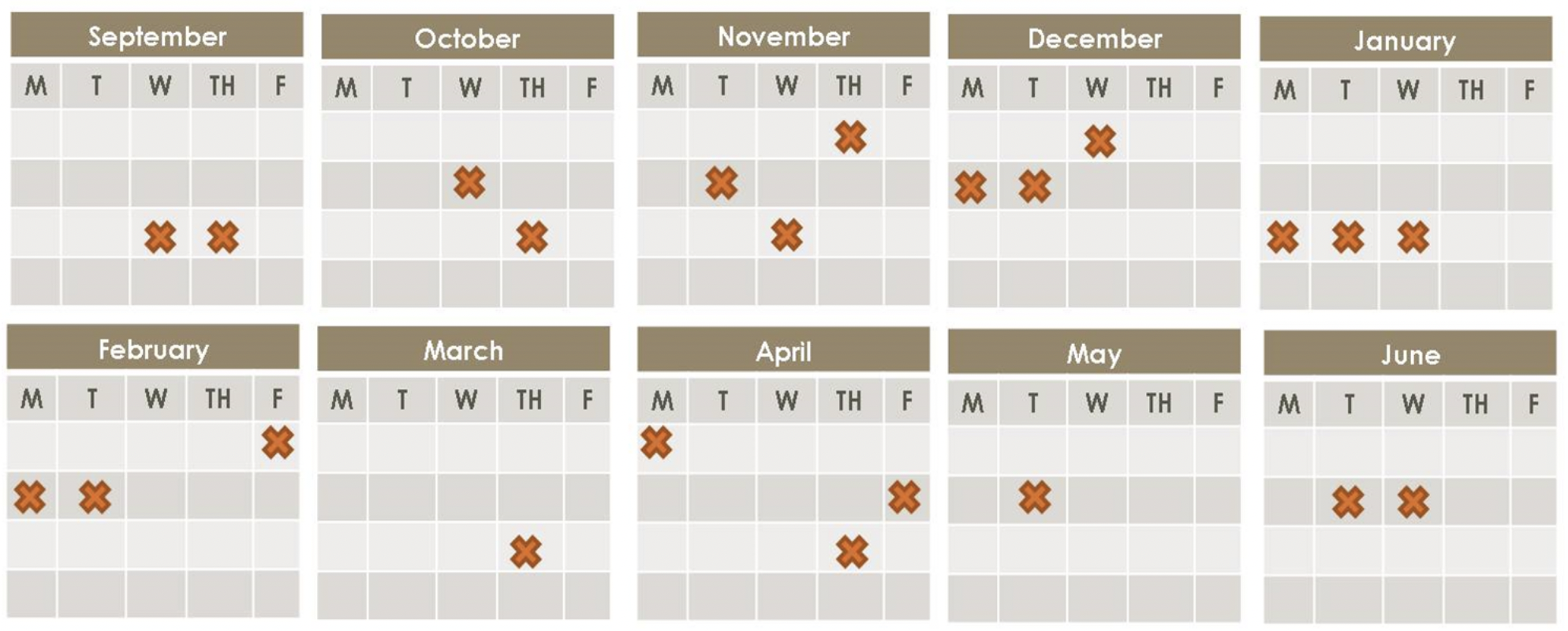Measuring Attendance
There are several different ways to measure attendance--average daily attendance rate, chronic absenteeism rate, and truancy rate are three of the most common terms. You might also hear about excused and unexcused absences or even exclusionary discipline. Read below to better understand how each term provides a different perspective on the attendance picture.
Average Daily Attendance (ADA) and Chronic Absenteeism
dAverage Daily Attendance (ADA) and chronic absenteeism are similar metrics and can be confusing. Average daily attendance is the percentage of students present on any given day. So if 95 of 100 students are present, the average daily attendance would be 95% and that tells you that 5% are absent. Those 5% however could be absent just one day or many days.
The count of days an individual student misses over the number of days that they are enrolled helps you calculate their absenteeism rate. So if a student misses 2 out of a 100 days they have an absence rate of 2%. If a different student misses 12 out of 100 days, then they have an absence rate of 12%. Student who have absence rates that are equal or greater then 10% are chronically absent. A school's chronic absenteeism rate is equal to the number of chronically absent students over the total student enrollment.
Read more about average daily attendance and chronic absenteeism in this article.
Truancy and Chronic Absence

The two terms describe different aspects of absenteeism and encourage different approaches.
First, let’s take truancy, a term that generally refers to unexcused absences. Federal law requires states to track truancy but left it up to states to come up with their own definition. In Maine, truancy is defined as missing:
- 10 full days of unexcused absences or 7 consecutive days of unexcused absences for students who have completed 6th grade.
- 7 full days of unexcused absences or 5 consecutive school day of unexcused absences for students who are age 6 who have not completed 6 grade
- 7 full days of unexcused absences or 5 consecutive school days of unexcused absences during a school year for students enrolled in a public day school at least 5 years of age
With its focus on unexcused absences, truancy naturally leads to an emphasis on students who are missing school without an excuse, skipping school and violating mandatory attendance requirements. Fixing a truancy problem often becomes a question of ensuring compliance, often left to front-office administrators, and in the most severe cases, to the legal system. Some recommend punitive consequences for truancy — such as suspensions, jail time and fines — for children and parents. Some communities and courts have devised effective approaches to reducing truancy, but in other places, punitive efforts are pushing students out of school. To learn more about the truancy process in Maine, check out this recorded webinar from the Maine DOE. You can also find more information on the Maine DOE Office of School and Student Supports page.
Chronic Absenteeism

Chronic absenteeism, on the other hand, incorporates all absences:
- excused
- unexcused
- disciplinary consequences
The focus is on the academic consequences of this lost instructional time and on preventing absences before students miss so much school that they fall behind. Chronic absenteeism recognizes that students miss school for many understandable issues such as asthma or bullying or homelessness or unreliable transportation, for which punitive responses are not appropriate. And what helps is working with families to share the importance of attendance and to address the underlying problems that are leading to absenteeism.
Given this broader focus, addressing chronic absenteeism becomes an issue for the entire community. Medical providers can help address health challenges; transit and housing agencies can resolve bus routes and housing stability; volunteers from businesses and faith communities can mentor students and support families. Developing systems and interventions to improve chronic absenteeism also improves truancy.
Chronic absenteeism is commonly defined as missing 10% or more of enrolled school days for any reason. That is 18 days a year and only 2 days a month.
JUST 2 DAYS A MONTH, ADDS UP

Using the messaging that absences "Add Up" can sometimes be more helpful than a zero tolerance approach encouraging no absences. By helping students and families self-monitor absences, families become partners in the decision-making about when missing school is appropriate and when it might be too much.
Taking a systematic, data informed, non-punitive approach that draws upon insights from students, families, teachers and community partners is what leads to strategies that can improve attendance and achievement.
To read more about chronic absenteeism, head to Research or Attendance in the News.
To learn more about Count ME In's approach to reducing chronic absenteeism, visit About Us.
To sign up for training or services, visit Our Services.
Some content above reprinted and adapted with permission from Attendance Works.






